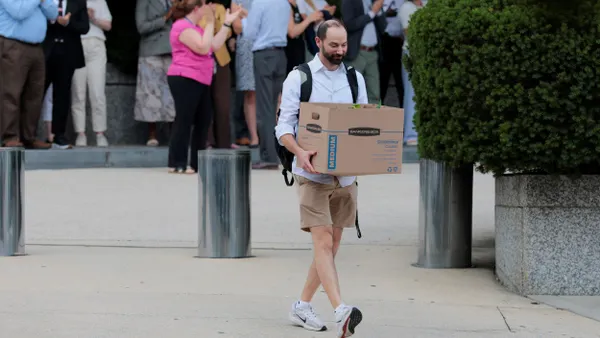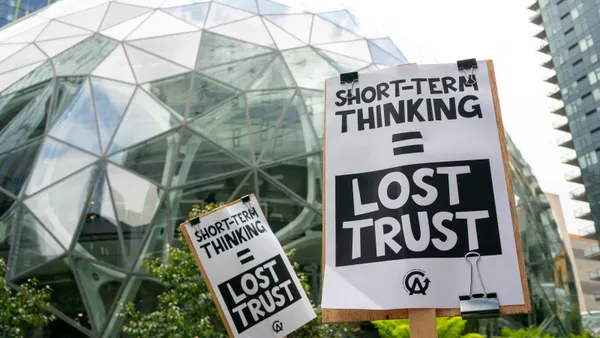North American tech workplaces — once considered leaders in workplace design and innovation — are still catching up to today’s work patterns and flexible schedules, according to a June 13 report from international design firm Hassell and workplace analytics firm Density.
In an analysis of 1.4 million square feet of workspace between May 2023 and May 2024, average peak utilization didn’t exceed 34%, and up to $40 million in rent costs were wasted per year on underused space.
“Tech companies have traditionally been workplace leaders. Their amenity-rich offices nurtured billion-dollar businesses and untold envy,” Daniel Davis, head of research at Hassell, said in a statement.
“Then the pandemic happened. Many quickly adopted hybrid and remote work,” he said. “Now, some of those offices sit underutilized while others struggle to accommodate new work patterns.”
For instance, tech companies appeared to over-optimize for open-plan offices before the pandemic. Every workplace included in the report was open plan, with only a handful of enclosed offices. With hybrid schedules, meeting rooms now often function as quiet spaces for video calls and private offices about 36% of the time.
When given a choice about their schedules, employees tend to come into the office to meet people, the report found. At workplaces where employees can decide where they work, workers spend about half of their in-office time in meeting rooms with others, as compared with 29% among employees with a three-day in-office policy and 23% among those with a two-day in-office policy.
Return-to-office policies also don’t appear to affect office utilization as much as previously thought, the report found. At workplaces that shifted from a flexible policy to a mandatory three-day hybrid policy, peak daily utilization increased from 29% to 46%. This may suggest that hybrid RTO policies aren’t being fully enforced or respected, the researchers wrote.
Hassell and Density offered actionable tips for businesses to optimize workplace design and utilization, such as implementing new designs that meet the evolving needs of hybrid work models, maximizing space to reduce costs and environmental impact, and fostering a culture of collaboration and adaptability by creating versatile work environments that shift to accommodate different needs and group sizes.
Office redesigns should seek to bridge the disconnect between the office and home, according to a Cisco report. Both employers and employees said they want better technology to support hybrid work, as well as better layouts and seating, eco-friendly features and health and wellness amenities.
With office utilization rates averaging around 31% in 2023, about 43% of organizations worldwide have said they plan to decrease their portfolio size by more than 30% in the next three years, according to a CBRE report. To make space decisions, companies are using new metrics, such as utilization rates and employee sentiment, rather than square feet per seat.
Companies are also considering flexible co-working spaces, satellite offices and short-term leases to meet their needs, according to a report by builder and operator CIC and Harvard Business Review Analytic Services. Leaders said they’re trying to prioritize collaboration by adding enhanced digital conference areas, unassigned desks and more meeting spaces.











